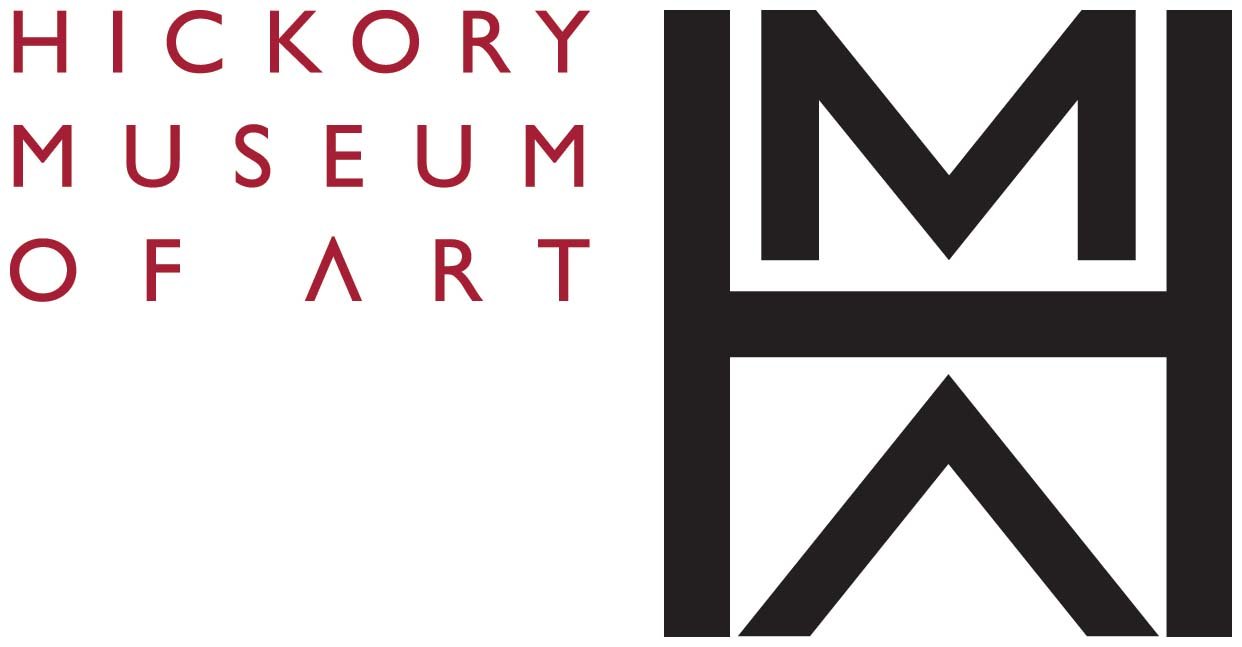The Museum's galleries
The Hickory Museum of Art shares space with other Hickory cultural organizations in the SALT Block, the extensively renovated former Claremont High School building. The Museum occupies three floors with nine galleries on the (when you are facing it) right side of the building. Many of the galleries are named for HMA supporters.
The Mildred Whitener Coe Gallery is dedicated to Mickey Coe, Paul Whitener’s widow and the Museum’s Director following Paul’s 1959 death until she retired in 1995. At the June 1987 gallery naming celebration, according to the Hickory Daily Record story, Mickey “humbly attributed the success of the Museum to being in a city that cares.” In early 2008 she said that although she thought of the Museum as “my baby’, it “was created for the good of the entire community.”
The two story high Coe Gallery was the high school’s gym before the renovations, and it is by far the Museum’s largest gallery space. It is the site of 2-3 major exhibitions each year, along with various other events.
The Nancy Pope Shuford Gallery is “Endowed by the Harley Shuford Family.” Nancy Pope Shuford was the wife of Harley F. Shuford Sr who in turn was a friend of Paul Whitener’s. For starters, Harley Sr’s brother A. Alex funded the Museum’s very first book purchase. Several generations of Shufords have continued this strong support of the Museum, including by underwriting the expenses of renovating the Museum’s third home (A.Alex in 1960) and by spearheading the major fund drive to save the Hickory High School building for HMA (Harley F. Jr in 1980).
The Paul Whitener Gallery of course honors the Museum’s founder. It is a modest space near the entrance of the Museum, and mostly showcases the Museum’s early years with Whitener, such as artists collected for the Museum during those years, or Whitener’s own works.
The L. C. Gifford Gallery honors the contributions of Hickory’s Gifford family to the Museum. Lester C. published Hickory Daily Record and supported Paul Whitener’s establishment of the Museum from the beginning. At L.C.’s death, his wife Mildred took over the publishing responsibilities, and their daughter Suzanne Gifford Millholland continued the family tradition until the paper was taken over by Berkshire Hathaway in 1998. Suzanne also continued to actively and generously support HMA, including as a volunteer Board member.
The Regal Manufacturing Gallery, next to the Gifford Gallery, is named in appreciation of the financial support provided by this local hosiery company during the Museum’s early days.
Of the not-yet-named galleries, the largest is the third-floor mezzanine Folk Art Mezzanine that houses HMA’s semi-permanent collection of southern folk art. On the same floor, the Folk Art Open Storage space provides an additional rotating display from HMA’s folk art collection.
Adjacent to the Coe Gallery is the Objects Gallery. It is lined with glassed-in cases and in its center is a walk-around glass case. It is most often used for a semi-permanent display of Museum-owned glass and pottery art, though it is sometimes used instead for other exhibits, either in conjunction with a Coe Gallery show or separately.
The Windows Gallery is anchored by two stained glass windows that once graced Hickory’s First Baptist Church. When the church expanded its building some years ago, it offered the windows to the community for free; and then-director Mickey Coe spoke up for two of them. They were stored until they found a home in the Museum’s current renovated location in 1986.
The first floor Entrance Gallery is a corridor leading into the Museum. Its changing displays are almost every Hickory Museum of Art visitor’s first taste of what the Museum offers.
Little Hand Big Hands is not a gallery as such, but provides space and materials for children to actively learn about the joys of being in a museum. It was recently renovated with paint and a fresh overall look.
Post by Karin Borei, HMA Project Coordinator, writer and editor as needed, and HMA blogger since our blog's inception in March 2015.






